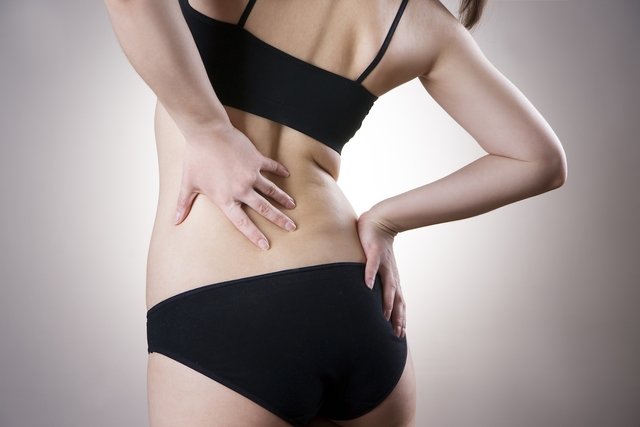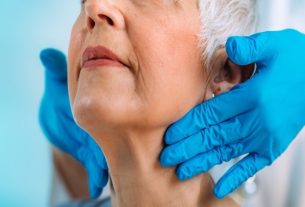Lumbar scoliosis is the lateral deviation of the spine that occurs at the end of the back, in the lumbar region. There are two main types of lumbar scoliosis:
- Thoraco-lumbar scoliosis: when the beginning of the curve is between the T12 and S1 vertebrae;
- Low back: when the beginning of the curve is between the L1 and S1 vertebrae.
Lumbar scoliosis can also be classified according to the side to which the spine curves, which can be to the right or left. Thus, lumbar scoliosis can be called: left or right convexity, and also dextroconvex.
In most cases, the cause of lumbar scoliosis cannot be found, which is why it is considered idiopathic, but in other cases, scoliosis may arise due to the inappropriate use of a backpack, poor posture or sports, for example.

Main signs and symptoms
In addition to the curvature of the spine, other signs and symptoms that may appear in cases of lumbar scoliosis are:
- Back pain, especially in the final part of the spine;
- Hip tilt;
- Stiffness of the spine;
- Legs with different length.
The diagnosis of lumbar scoliosis can be made by a doctor or physiotherapist by observing the person’s posture and is confirmed by an X-ray examination, where the Risser degree, the difference in height between the legs, the degree of lateral inclination and the most rounded vertebra.
In milder cases, there is usually no need to perform other tests, but MRI may be indicated when there is suspicion of compression of the sciatic nerve, for example.
How the treatment is carried out
There is not always a need to undergo specific treatment for scoliosis, especially when it is mild scoliosis and the person has no signs or symptoms. However, if there is pain and discomfort in the back, compression of the sciatic nerve or if there is a large deviation, treatment may be indicated.
Normally, scoliosis curves with more than 50 degrees of deviation are serious and tend to increase throughout life, which is why surgery is necessary to correct them, but curves with 30 degrees or more also tend to increase by 0.5 to 2 degrees per year and, therefore, it is recommended to undergo physiotherapy with exercises to correct it, in order to prevent it from getting worse.
Scoliosis curves of less than 30 degrees typically do not worsen over time, and the need for treatment depends on whether the person has pain or not or whether there are other associated complications.
What are the exercises for lumbar scoliosis?
The exercises recommended to treat lumbar scoliosis are those that strengthen the abdominal muscles, the back muscles, and also RPG exercises, specific to stretching the muscles that are shortened, in order to promote harmony between muscular forces.
In many physiotherapy clinics, mirrors are used to help improve the person’s awareness of their posture while performing the exercises. Although it is possible to perform the exercises at home, there are better results when they are performed together with a physiotherapist, who can constantly correct the exercises.
Practicing sports such as basketball may be recommended for teenagers while wearing an orthopedic brace.
Bibliography
- BERDISHEVSKY, Hagit; et al. Physiotherapy scoliosis-specific exercises – a comprehensive review of seven major schools. Scoliosis Spinal Disord. 11-20, 2016
- UNIVERSITY OF MARYLAND MEDICAL CENTER. Adult Scoliosis. 2003. Disponível em: <https://www.umms.org/ummc/health-services/orthopedics/services/spine/patient-guides/adult-scoliosis>. Acesso em 13 mai 2019
- SCOLIOSIS RESEARCH SOCIETY. Scoliosis. Disponível em: <https://www.srs.org/patients-and-families/conditions-and-treatments/adults/scoliosis>. Acesso em 13 mai 2019

Sign up for our newsletter and stay up to date with exclusive news
that can transform your routine!
Warning: Undefined array key "title" in /home/storelat/public_html/wp-content/plugins/link-whisper-premium/templates/frontend/related-posts.php on line 12
Warning: Undefined array key "title_tag" in /home/storelat/public_html/wp-content/plugins/link-whisper-premium/templates/frontend/related-posts.php on line 13




